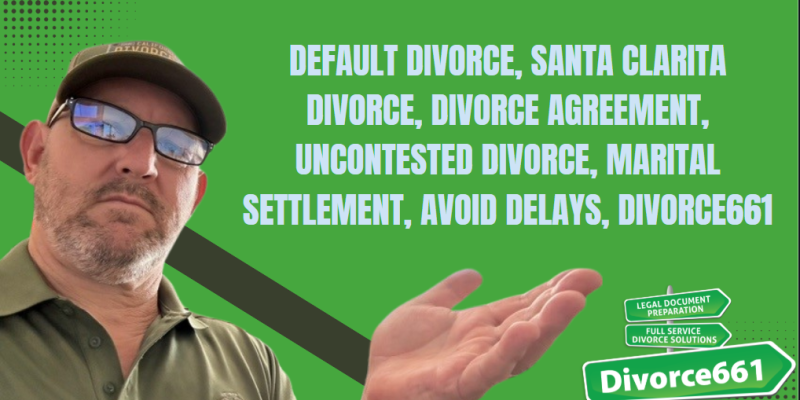How to Get a Divorce in Santa Clarita Without Drama?
Can a divorce really be peaceful and simple?
If you are thinking about divorce and want to keep things peaceful, the answer is yes. When both spouses are in agreement and want to avoid conflict, the entire divorce process can be completed without court, without fighting lawyers, and without drama. It all comes down to being cooperative, organized, and getting the paperwork done correctly.
When you can avoid court and attorneys
An uncontested divorce is the situation where court appearances and trial lawyers are not required. Key criteria are:
- Both spouses agree on all major issues such as property division, debts, and, if applicable, child custody and support.
- Both parties are willing to complete and exchange the required financial disclosures.
- The agreement can be reduced to a written marital settlement agreement or judgment that the court can approve.
Step by step: How an amicable Santa Clarita divorce works
- Talk through and agree on everything. Finance, property, debts, and parenting plans if you have children.
- Organize necessary documents: pay stubs, bank statements, mortgage information, and any other financial records.
- Complete financial disclosures and any required court forms accurately.
- Draft a written agreement that reflects the terms you both agreed to.
- File the paperwork with the court. Many filings can be submitted electronically.
- Have the court finalize the judgment based on your agreement. If everything is in order, neither spouse needs to step into a courtroom.
What a flat fee, full-service amicable divorce includes
When both spouses are cooperative, a flat-fee, full-service approach can handle the entire process for you. Typical services include:
- Preparation and filing of initial court forms
- Handling financial disclosures and required attachments
- Drafting a complete marital settlement agreement or judgment
- Filing the final paperwork and obtaining the divorce judgment
Real example: A Santa Clarita couple who finalized without court
We recently worked with a couple who had already discussed and agreed on all terms. They wanted a simple, flat-fee divorce. We handled the paperwork, filed it with the court electronically, and had their divorce finalized without either of them ever stepping foot in a courtroom. That is exactly how an uncontested case should work when both parties stay cooperative and organized.
Tips to keep your divorce peaceful and fast
- Communicate openly about priorities and what truly matters to each of you.
- Stay organized. Gather financial records early to avoid delays.
- Complete financial disclosures fully and honestly to prevent future disputes.
- Put agreements in writing. A clear written agreement prevents misunderstandings.
- Use a neutral third party or flat-fee service to handle paperwork and filing so you avoid legal conflict and surprise costs.
Common questions
Do we need lawyers?
No. If you both agree on terms and complete the required paperwork properly, you can finalize a divorce without lawyers.
Will we have to go to court?
Not usually. Agreed cases can be submitted for approval without personal court appearances. The court reviews the papers and, if everything is in order, signs the final judgment.
How much does a flat-fee service actually cover?
Flat-fee services generally cover the entire administrative process: forms, financial disclosures, drafting the agreement, filing, and finalizing the judgment. Confirm what is included before you start so there are no surprises.
Ready to move on peacefully?
If you want to get divorced in Santa Clarita the easy way, schedule a free consultation to discuss your situation and learn whether an uncontested, flat-fee divorce is right for you. A remote, full-service process can get you through the paperwork quickly, affordably, and without courtroom drama.
“Can we do this without fighting lawyers or court appearances?”
Yes. With cooperation, organization, and the right help, you can finalize your divorce peacefully and move forward with your life.
Visit divorce661.com to schedule your free consultation and learn more about an amicable, flat-fee divorce in Santa Clarita and California.










